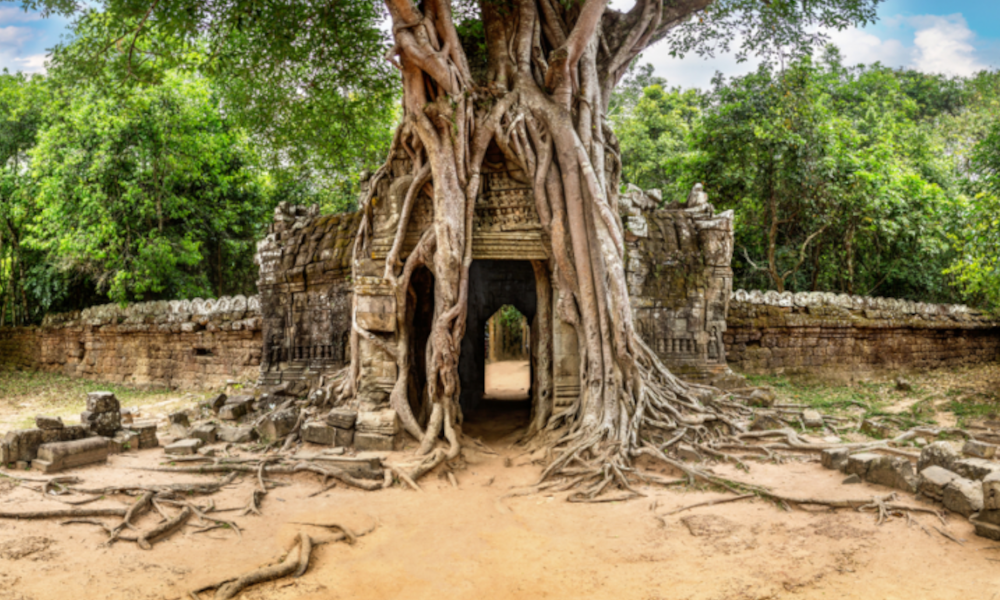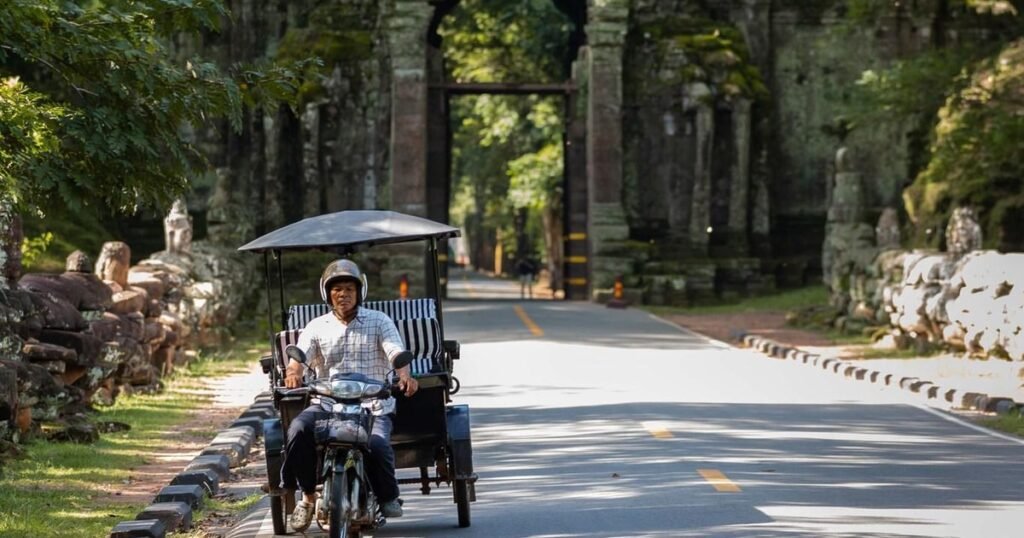Ta Som Temple

It is often said that valuable treasures can be found in compact forms, a notion that certainly applies to Ta Som. Despite being one of the smaller temple complexes within the Angkor Archaeological Park, it merits a visit. Similar to its neighboring temples, Preah Khan and Ta Prohm, Ta Som has undergone minimal restoration, resulting in a state of semi-ruin where trees and indigenous flora flourish over and through the temple’s walls. A striking characteristic of this site is the massive strangler fig tree that has enveloped the eastern gopura, or gate. Additionally, Ta Som showcases towers adorned with tranquil faces on the outer enclosure, representative of the Bayon architectural style. This enchanting location offers numerous unique photographic opportunities that should not be overlooked.
Experience a private Tuktuk tour of Angkor Wat and its neighboring temples. Discover the grandeur of Angkor Thom, Ta Keo, Banteay Kdei, and additional locations...
Why and When to Visit
Ta Som, while included in the Grand Circuit, is often overlooked by tourists who tend to gravitate towards the more renowned attractions within the park. However, those who opt to explore this frequently neglected temple will find their efforts richly rewarded. It is highly probable that you will enjoy the site in solitude, allowing you ample time to wander and appreciate the intricately preserved bas-reliefs without the disturbance of large crowds.
The remarkable strangler fig enveloping the eastern gate bears a striking resemblance to the tree-clad temple of Ta Prohm, which gained fame through the film “Tomb Raider.” Here, you will not face long queues for photographs, and you will have the freedom to capture as many images as you desire. Ta Som possesses a unique beauty that is captivating at any hour, though the optimal lighting for photography occurs during the early morning or late afternoon.
Location and How to Get There
Situated in the northeastern part of Angkor Archeological Park, Ta Som lies on the eastern shore of the artificial lake known as Javatataka Baray. In the center of this lake is an island that hosts the Neak Pean temple. Visitors following the Grand Circuit typically approach Ta Som via Neak Pean before continuing to East Mebon. Although the temple was initially intended to be accessed from the east, contemporary visitors now enter Ta Som from the west, passing beneath the face tower located at the western gopura.
History and Architecture
Ta Som was constructed in the late 12th century under the reign of the illustrious King Jayavarman VII. The specific purpose of this temple remains largely unknown, though it is speculated that it may have been dedicated to the king’s father or one of his mentors. For centuries, Ta Som was enveloped by dense jungle until the 1930s, when efforts were made to clear the area sufficiently for visitors, although it was left largely unrestored. This temple, characterized by the Bayon architectural style, is encircled by a moat and consists of three distinct enclosures made from laterite, a reddish-brown stone typical of tropical regions. The innermost enclosure contains four corner towers and four gopuras, with face towers featuring four faces oriented towards each of the cardinal directions. The second and third enclosures are divided by the moat and are designed to be symmetrical, each containing two gopuras on the eastern and western sides.
The face towers are a hallmark of King Jayavarman VII’s architectural style and can be found in numerous temples erected during his rule. Most scholars contend that these faces symbolize both the king himself and Lokesvara, the bodhisattva of compassion. Like many other temples within the Angkor Archaeological Park, Ta Som showcases a blend of Hindu and Buddhist imagery, reflecting the fluctuating religious practices in the region over the centuries. Unfortunately, some representations of the Buddha suffered damage in the 13th century when Hinduism temporarily eclipsed Buddhism. Nevertheless, despite its age and the ravages of nature, many of the bas-relief carvings remain in remarkably good condition.
If time permits, a visit to this small yet enchanting temple is highly recommended; it is sure to leave a lasting impression.

